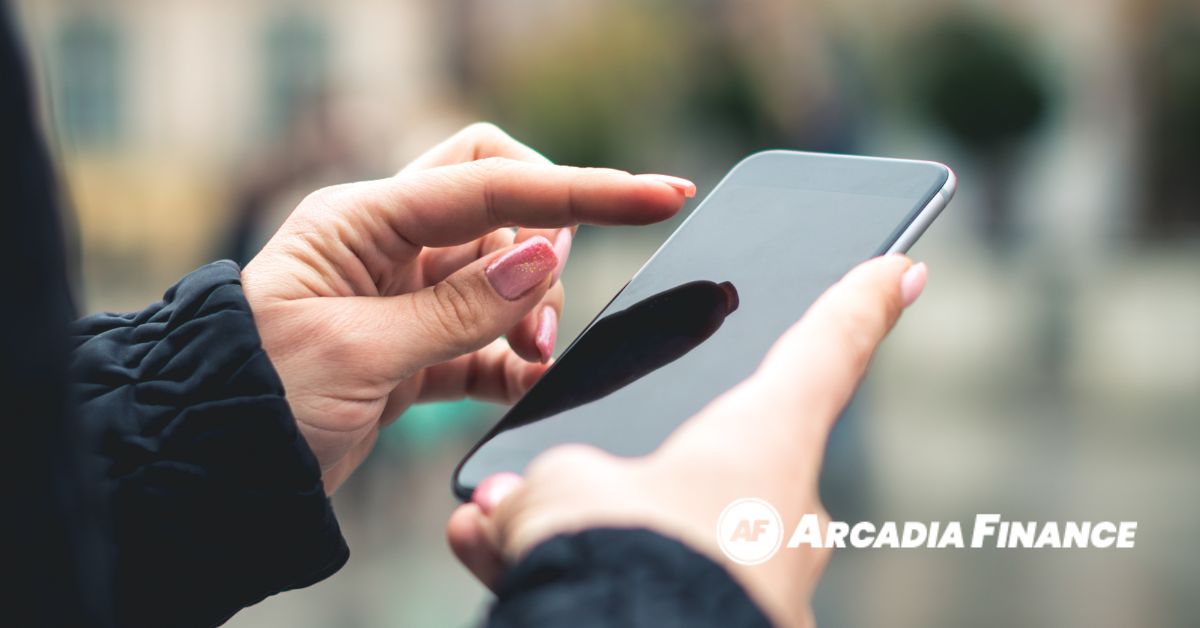
In today’s digital age, our relationship with money has shifted dramatically. Gone are the days of hoarding paper bank statements or queuing in lengthy lines at the bank. Now, a simple glance at a banking app on a smartphone provides us with an immediate understanding of our financial standing. Two of the most regularly encountered figures when checking our accounts are the available balance and the current balance. While these figures may seem straightforward, there’s a world of variation between them.
Key Takeaways
- Available vs. Current Balance: The available balance is the amount you can spend right now, considering all pending transactions. The current balance is the total amount of funds in the account, not accounting for transactions still in processing.
- External Influences: Factors such as market volatility, regulatory changes from the South African Reserve Bank (SARB), and foreign transactions can influence the variations between the available and current balances.
- Practical Implications: Being aware of both balances is crucial to avoid overdrafts, unforeseen fees, and declined transactions. Mobile banking apps are tools that offer real-time insights into these balances.
- The Ultimate Goal: Understanding your balances is a reflection of your financial health and literacy. It aids in effective decision-making, ensuring a smoother banking experience.
The Importance of Understanding Your Bank Balances
Let’s start with a blunt question: Have you ever been in a scenario where you believed you had ample funds in your account, but then your card was embarrassingly declined at checkout? Or, perhaps, you’ve been slapped with an unforeseen overdraft fee? These aren’t mere oversights, and they can stem from not grasping the distinction between available and current balances. Knowledge is empowerment. By understanding these balances, you arm yourself with the tools to navigate the financial waters with confidence, sidestepping potential pitfalls and leveraging opportunities.
In essence, your available balance showcases the funds you can spend or withdraw right now. It accounts for pending transactions and other holds. The current balance, on the other hand, represents the total funds in your account, not accounting for those pending transactions. By recognizing this distinction, you ensure smoother transactions and prevent potential financial mishaps. It’s akin to understanding the fuel gauge in a car — while the tank might be full, it’s the available fuel (considering consumption factors) that determines how far you can drive.

What is a Balance?
Every time you log into your online banking or glance at a bank statement, numbers dance before your eyes. This is your balance. Think of it as a snapshot, a momentary capture of your financial standing in that account. The total of your financial transactions, both inflows (deposits) and outflows (withdrawals and purchases), provides this number. But why two types?
Imagine a scene: You’re at a bustling market. There are traders shouting prices, buyers bargaining, and goods being handed over, but some payments are made on credit. The total goods the traders have is their current balance. However, what they can immediately trade or sell, considering those credit transactions, becomes their available balance. This analogy is rudimentary but paints a broader picture of why two balances coexist.
Available Balance
Your available balance is dynamic, and always on the move. Picture it as your account’s heartbeat, responsive and reflexive. It’s the actual amount you can tap into at any given moment. Why? Because it considers those pending transactions — that coffee you bought this morning on your card, or that online purchase still being processed. It’s like your wallet; while you may know you have money coming in, what’s in there right now is what you can spend.
Current Balance
Now, the current balance is a slightly broader view. It’s the total amount in your account at any given moment without subtracting pending transactions. Why does this exist? Think of it as your account’s potential. For instance, a cheque you deposited that hasn’t cleared yet adds to your current balance but isn’t part of your available balance till it’s processed.
Can I Spend My Current Balance?
You can use your current balance, but you need to be aware of other pending financial transactions. The current balance includes all your funds, even those that are held or in transit, such as pending debit card transactions or unprocessed cheques.
For instance, if both your current and available balance are R1,000 and you spend R100 on groceries, your current balance will still show R1,000 while the transaction is pending, but your available balance will reflect R900. If another transaction, like a cheque for R500, clears, your available balance helps you understand your actual spending power without risking overdraft fees.
Regularly checking your available balance, especially if you have recurring payments or plan to make a large purchase, is important for avoiding overdraft fees and maintaining better control over your finances.

Current Balance vs. Available Balance Explained
Your current balance indicates the total amount of money in your bank account at the moment. Your available balance is the amount you can actually spend, taking into account any pending payments and deposits.
The key difference is that pending transactions are not included in your current balance, which is why these two balances might not match. If you spend money based solely on your current balance, you could overdraw your account and incur fees. To avoid overdraft charges, always check your available balance to see how much you can safely spend.
Why is My Available Balance Different from My Current Balance?
Your available balance differs from your current balance because it includes pending transactions, while your current balance does not. A pending transaction has been authorised but hasn’t yet been posted to your account, whereas a posted transaction has been fully processed.
If your bank hasn’t processed a debit card purchase yet, your current balance might be higher than your available balance. This can also occur if you’ve deposited a cheque that hasn’t cleared. It typically takes a couple of days for a cheque to clear, and once it does, that money will be part of your available balance.
Your available balance is a more accurate figure for determining how much money you have in your account. However, keep an eye on your available balance for large or recurring payments, as it is most affected by new transactions.
Don’t worry if your balances aren’t the same. Since transactions, both incoming and outgoing, happen regularly, these balances are bound to change. Using your available balance and considering any outstanding cheques and payments before spending can help you avoid overdrafting your account and facing fees, which could leave you with a negative balance and owing the bank.
Which Balance is More Reliable?
Neither balance is inherently better or more reliable than the other, as each provides different insights into your bank account. However, certain situations may make one balance more useful than the other.
For instance, if you have a large bill due soon, such as rent or a car payment, you might refer to your available balance. This balance shows how much you can safely spend at any given moment. Relying on your current balance in such cases can increase the risk of overdrawing your account, especially if you’re already close to your limit and have many pending payments.
Using your available balance to gauge your spending ability more accurately helps you manage your finances better and avoid potential fees, thus preventing unexpected overdrafts.

Banking in South Africa
South Africa isn’t just home to breathtaking landscapes; it’s also the birthplace of some trailblazing financial institutions. Local giants like Standard Bank and First National Bank dominate the skyline, but there’s also a significant presence of global entities, adding a touch of international flavor to the mix.
Each bank, with its policies, procedures, and customer-centric solutions, approaches the concepts of available and current balances with slight variations. Some may process local transactions faster, while others might offer more clarity on pending amounts. Navigating this requires awareness, and ensuring you choose the right institution for your specific needs.
Unique Banking Practices in South Africa
The South African Reserve Bank (SARB), the nation’s primary financial regulator, plays a pivotal role in shaping banking practices. Its guidelines influence everything from transaction processing speeds to how holds on accounts are managed.
South Africa’s diverse population brings about varied banking needs. From bustling urban centers where digital transactions reign supreme to more rural areas with traditional banking needs, the country is a tapestry of financial practices. This diversity impacts the variations of available and current balances in ways unique to South Africa.
Practical Implications
Let’s focus on some hands-on, real-world implications and how they play out in South Africa’s vibrant banking scene.
Overdrafts and Their Connection to Balances
Oh, the dreaded overdraft! A term no account holder wants to hear, yet a reality many have faced. In essence, an overdraft happens when the account’s balance goes below zero. Here’s where the distinction between available balance and current balance becomes crystal clear. An overdraft is often the result of not keeping a keen eye on the available balance, which, remember, considers those pending transactions.
For instance, in South Africa, with its multitude of instant EFT services, transactions can sometimes take a bit to reflect, leading to an accidental overspend. Awareness is your best ally here. Regularly checking your available balance, especially before larger purchases, or withdrawals, can save you from unforeseen overdraft fees and the associated stress.
How to Avoid Overdraft Fees
Overdraft fees are never pleasant, but you can avoid them with a few straightforward steps. One of the simplest ways to prevent overdraft fees is to maintain a surplus of funds in your account. This precaution reduces the risk of overdrawing, even if you overlook a pending payment or an upcoming automatic bill. Having extra funds also provides a safety net for unexpected expenses.
For those living from paycheck to paycheck, consider opting for overdraft protection. This service can prevent payments from being declined. However, be aware that banks often charge substantial fees for this protection, so it’s important to check your bank’s fee structure. In many cases, overdraft fees can exceed R600 per occurrence.
By maintaining a financial buffer in your account and familiarising yourself with your bank’s policies, you can effectively avoid costly overdraft fees and improve your financial management.
Charges, Fees, and Balances
Every bank has its fee structure. From monthly maintenance fees to transaction charges, these fees play a direct role in shaping your balances. In South Africa, the competitive banking landscape often leads to a variety of fee structures catered to different customer segments.
Your current balance might show a healthy figure, but have you accounted for the monthly fees that are yet to be deducted? Or perhaps, that outward transfer fee for sending money abroad? This is where your available balance steps in, giving you an up-to-date reflection of what’s truly available post all deductions.
Mobile Banking and Balance Inquiries
The digital age has transformed South African banking. Mobile banking isn’t just a convenience; for many, it’s the primary mode of banking. Apps from banks like Capitec and Nedbank are packed with features, and checking your balances is often just a tap away.
Mobile banking ensures that you’re always in the loop. Immediate notifications after transactions, coupled with easy access to both your available and current balances, mean that you’re never caught off-guard. The instant nature of these apps allows for real-time financial decision-making, a boon in today’s fast-paced world.
» Learn more: Pros & Cons of E-Banking!
Managing Potential Confusions
It’s natural to feel overwhelmed or confused, given the intricacies of banking balances. However, equipped with the right knowledge, managing them becomes a breeze.

Common Misunderstandings About Balances
One widespread misconception is treating the current balance as spendable money. It’s always vital to remember that while this balance shows your account’s standing, it’s the available balance that guides immediate spending decisions. Educating oneself and leveraging bank resources, like customer care or informative sessions, can dispel such misunderstandings.

Tips to Keep Your Balances in Check
Regularly checking balances, especially before significant transactions, is paramount. Set up alerts or reminders to stay updated. Leveraging mobile banking, as discussed, offers real-time insights. Lastly, always keep a buffer amount to account for unforeseen charges or delays in transaction processing.
About Arcadia Finance
Seamlessly secure your loan via Arcadia Finance. No application charges, and choose from 10 reliable lenders, each adhering to South Africa’s National Credit Regulator guidelines.
The Influence of External Factors on Balances
Beyond the walls of the bank, numerous external influences can affect the balance between available and current balances. From government regulations to market forces, these influences bring additional layers of complexity to understanding your finances.
Market Volatility and Banking
South Africa, like many economies worldwide, isn’t immune to market fluctuations. During economic downturns or times of volatility, banks might adjust their transaction processing speeds or hold policies. For example, during a severe economic crisis, cheque clearances might take longer, affecting the synchronicity between the available and current balances.
Regulatory Changes and Implications
The South African Reserve Bank (SARB) is at the helm of steering the country’s financial ship. Changes in regulations or directives can directly or indirectly impact bank balances. For instance, if SARB implements a new directive on transaction transparency or speeds, banks will need to adapt, possibly altering the dynamics of how available and current balances are displayed or updated.
Foreign Transactions and Currency Exchange
South Africa’s position on the global stage means numerous cross-border transactions daily. When dealing with foreign transactions, exchange rates come into play. A purchase made internationally might take time to reflect in your account due to currency conversion processes, causing potential discrepancies between your available and current balances for a short period.
Conclusion
In the dynamic world of banking, especially in a diverse country like South Africa, understanding these balances is paramount. They aren’t just numbers; they’re a reflection of your financial health, your purchasing power, and your ability to plan and dream.
Frequently Asked Questions
The available balance is what you can spend now, considering pending transactions. The current balance reflects the total funds in your account but doesn’t account for transactions still being processed.
It’s likely that while your current balance showed sufficient funds, your available balance was lower due to pending transactions, leading to the decline.
Mobile banking provides real-time updates on account balances, transactions, and more. Instant notifications can help you keep track of your spending and account status on the go.
While your bank balances per se aren’t directly impacted by market volatility, transaction processing speeds, hold policies and related factors might be influenced during economic fluctuations.
Regularly checking your balances, especially before significant transactions or planning big purchases, is a good practice. With mobile banking, staying updated becomes even more effortless
Cheap loan - fast, uncomplicated, trustworthy
At Arcadia Finance you can compare loan offers from several lenders without obligation - free of charge and without any Schufa check. This gives you an overview of your options and allows you to choose the best offer.
Fill out our form now and compare interest rates at over 20 banks - transparently and quickly.

